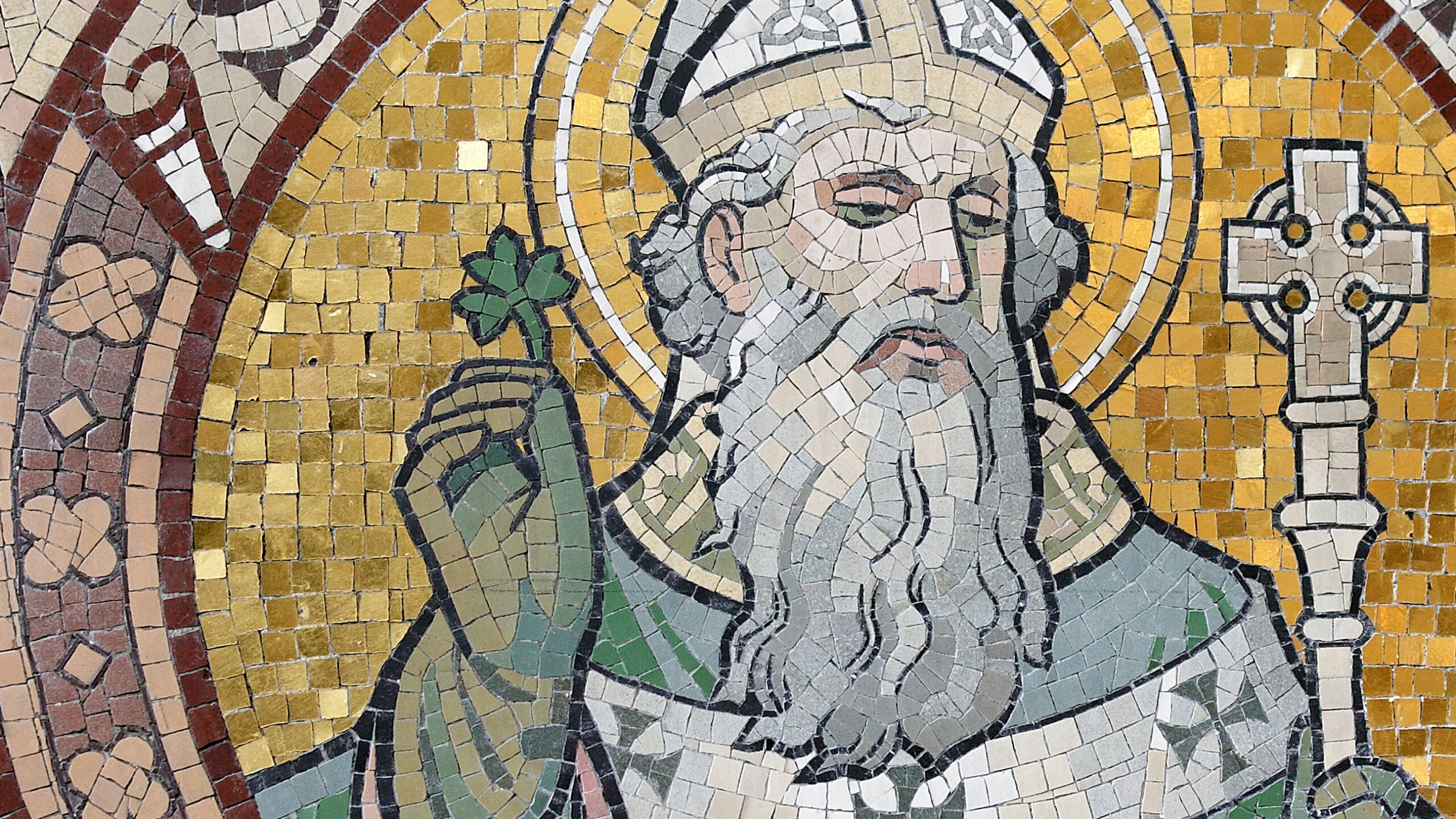In one of the earliest legends of St. Patrick, written about two hundred years after his death, the patron saint of Ireland is portrayed in a battle of authority with the pagan king of Ireland who ruled at the time. In the story, the pagan king is based at Tara, which historically was the seat of power of Irish pagan principalities. In the narrative, the pagan king is surrounded by his “seers and magi,” who fearfully foretold the coming of “another way of life . . . like a kingdom . . . that would overthrow kingdoms . . . and be a kingdom that would have no end.” Most significantly, these pagan advisors prophesy that “when all these things happen, our kingdom—which is pagan—shall not stand” (Muirchú, Life of Patrick).
The story then progresses to its climax. On the same night that the king and his pagan followers were celebrating their festival at Tara, Patrick celebrated the Easter Vigil nearby. The king had decreed that it was strictly forbidden, under pain of death, for anyone to light a fire that night before he would light his own fire. In defiance of the king, Patrick lit the Easter fire that, we are told, was seen by all, who “viewed it with great wonder.” When they saw this fire, the wise men of the king warned him that this act of defiance was more than an act of disobedience:
If it is not put out tonight, it will never be extinguished! You should know that it will keep rising up and will supplant all the fires of our own religion. The one who lit it, and the kingdom he is bringing upon us this night, will overcome us all—both you and us—by leading away everyone from your kingdom.
This is a brief summary of the story written by Muirchú that still holds an important place in the spiritual imagination of Irish Christians today. But what does it mean? Simply, it is about the subversive power of Christianity, represented by the figure of St. Patrick, over other deities and secular authorities in Ireland. By the powerful symbol of fire ignited at the Easter Vigil, it announces the arrival of Christ’s lordship over sin, idolatry, and paganism in Ireland, as well as the appropriation of all other kingdoms into the kingdom of God.
. . . the fire of faith that St. Patrick lit still burns and, in fulfillment of the prophesy, will never go out.
It should be noted here that Muirchú’s narrative is modeled on similar stories in Scripture where there is a contest between a pagan deity and the God of Israel—which shows the triumph of the latter (See 1 Kings 18; Daniel 3:1-24; Matt. 2:1-6). Muirchú’s aim in composing this story was to show how the triumph of faith in Christ, recorded in Scripture, was being fulfilled historically, locally, and particularly in Ireland through the apostle Patrick. It is also consistent with the historical Patrick’s own writings, where his proclamation of Christ’s lordship over every other sovereignty and power was at the heart of his mission of evangelization to the Irish. The context and time in which Muirchú’s story was composed is reflected in its message. In the fifth century, Patrick writes about his extraordinary missionary success as the Irish began to turn away from the worship of “idols and unclean things” to become “beloved sons and daughters of God” through faith and baptism (see Patrick’s Confession). By the early eighth century, when the story of Patrick and the Easter fire was composed, Christianity was making even further headway as it established itself socially and culturally.
So what can we make of the story today, and how does it speak to us as we celebrate St. Patrick this year? What stood out for me as I re-read the story was the invitation to the Irish Church—and indeed the whole Church—to place greater faith in the ultimate victory of the risen Christ and to do as St. Patrick did in the story: proclaim his victory with fresh courage and conviction as a subversive power. What also stands out from the story is the place where we do this—not just in the market square, online, our schools, places of work, or with friends and family, but especially in the liturgy, for it is there that we proclaim and pray what we believe.
The subversive theme of Easter contained in this legendary story is the same subversive power of Christ’s victory over sin, death, deceit, and false gods that the Church still proclaims today. At the Easter Vigil, the Church celebrates the victory of Christ, which “dispels wickedness, washes faults away, restores innocence to the fallen . . . drives out hatred, fosters concord and brings down the mighty” (The Exsultet). As we approach Easter, we might ask ourselves, do we really believe this? Do we believe in Christ’s power to do all these things and do we believe what we celebrate in the liturgy?

But what does this fresh confidence in Christ’s power look like? A good place to start is with Jesus himself. On hearing that his friend Lazarus was sick, Jesus announced that “this sickness will not end in death, but it is for God’s glory so that through it the Son of God may be glorified” (John 11:4). Here, the Lord displays a confidence that despite the sickness and imminent death of his friend, he was able to look beyond these obstacles and encourage faith in God’s power. Similarly, on the night before he died, Jesus saw his own death coming but looked beyond it in faith to God’s power to restore his kingdom (see Luke 22:17, 28).
St. Paul, who proclaims the power of Christ’s love from which nothing can separate us, is an inspiring example of an evangelist who places his trust in the truth of that message (see Rom. 8:39). In the same spirit, Pope Francis urges that “on the lips of the catechist, the first proclamation must ring out over and over: ‘Jesus Christ loves you; he gave his life to save you; and now he is living at your side every day to enlighten, strengthen and free you.’” The pope then insists that this is the principal proclamation, the one we must hear again and again in different ways, the one which we must announce at every level and moment. Here is the subversive message of the Gospel that has been placed in our hearts and impels us to proclaim in word and witness.
The story of St. Patrick and the Easter fire expressed the faith of the Irish at the turn of the eighth century and told that Christ was Lord over every aspect of life if he was to be Lord at all. In Christ, God’s triumph over every adversary, idol, and foreign god is complete. His Resurrection was a triumph destined to endure for all the ages and be present to all people down to the present day. In the two-thousand-year history of the Church, kingdoms, empires, and principalities have indeed come and gone. Their fire has gone out. But the light of the Easter fire still shines out. In any given year, the celebration of St. Patrick’s Day is followed in a short time by the celebration of Easter. Although it may have dimmed in recent years, the fire of faith that St. Patrick lit still burns and, in fulfillment of the prophesy, will never go out. May the Easter flame of faith in Christ’s love that burns in the hearts of all who believe never be extinguished.
